In licensed facilities, meeting specific lighting requirements is essential. The recommended light levels for badminton courts vary based on the competition level, with four distinct standards typically in use. The following sections will detail the key factors influencing these standards. Additionally, a brief FAQ section will provide further insights into four related topics.
Modern badminton court lighting relies on LED fixtures to achieve the required illumination. The quantity of LEDs needed can differ based on regulations. Historically, badminton halls used numerous metal halide lamps, but today’s advanced LED technology offers a more effective lighting solution. With superior light efficiency, LEDs can precisely achieve the necessary lux levels, ensuring consistent and adequate brightness.
Table of Contents
ToggleLux Level Requirements for Badminton Courts
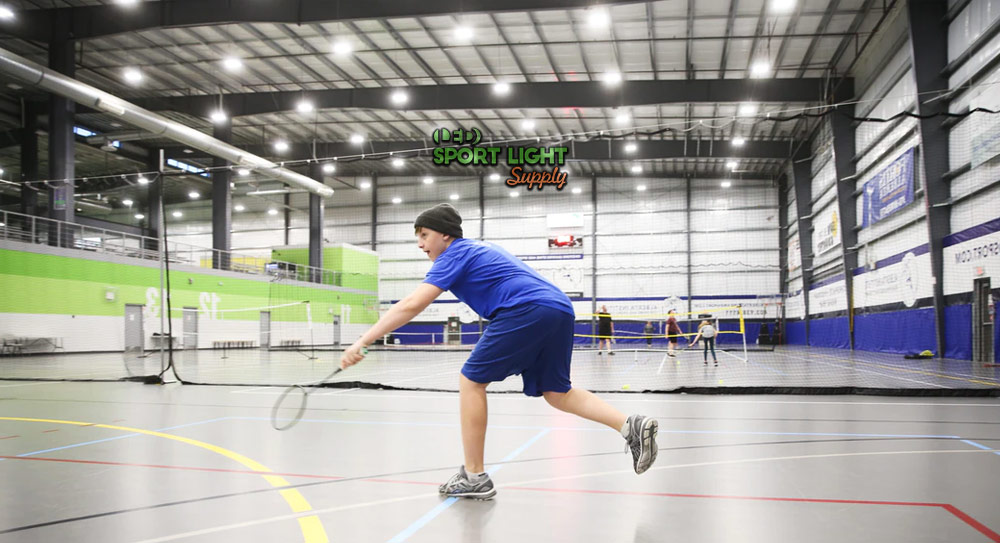
Badminton halls must meet rigorous standards to support high-level preparation, including adequate lighting. This includes lighting for various areas such as massage rooms, physiotherapy clinics, gyms, dining rooms, classrooms, and large recreational spaces. Specifically, the badminton court itself requires precise lux levels to be suitable for official matches. Most sports associations mandate that these lighting standards be met before the season begins.
Lux and footcandle (Fc) are units used to measure luminous intensity, with 1 footcandle equaling 10.76 lux. A light meter is essential for achieving the required luminous intensity.
Recreational Use
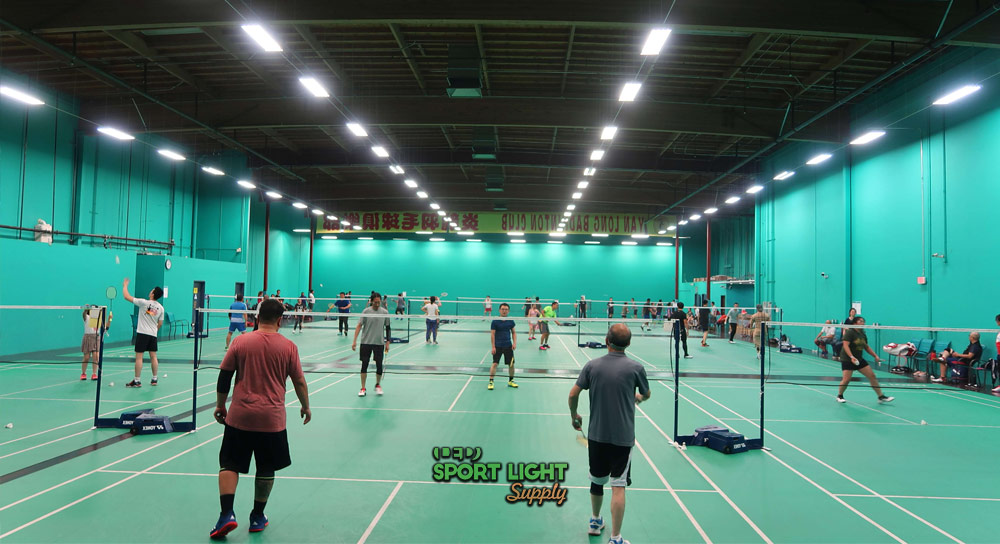
For recreational badminton, lighting levels typically range from 200 to 300 lux (18-28 fc). This can be achieved using floodlights or spotlights, with floodlights providing a wider beam and spotlights offering a narrower one. The size of the badminton court and ceiling height will determine the number of luminaires required, and outdoor courts may need special adjustments, such as lighting systems that adapt to the absence of fences. For context, 200-300 lux is similar to a well-lit living room area, providing adequate visibility without overwhelming brightness.
College and Campus Facilities/Training
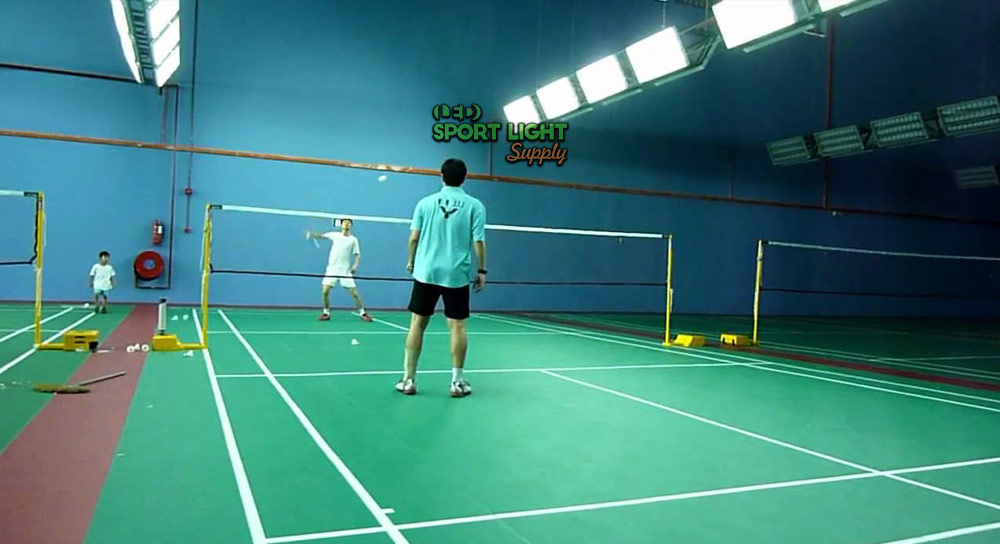
Tournament-size badminton courts in educational and training facilities require 300 to 500 lux (28-46 fc). This range is ideal for both student use and professional coaching. LED lights are recommended for their efficiency and cost-effectiveness. As the level of play increases, so does the need for better color rendering to highlight details such as court markings. Lighting at this level resembles the illumination in small retail outlets, offering bright light with soft shadows, crucial for training and skill development.
Community Competitions
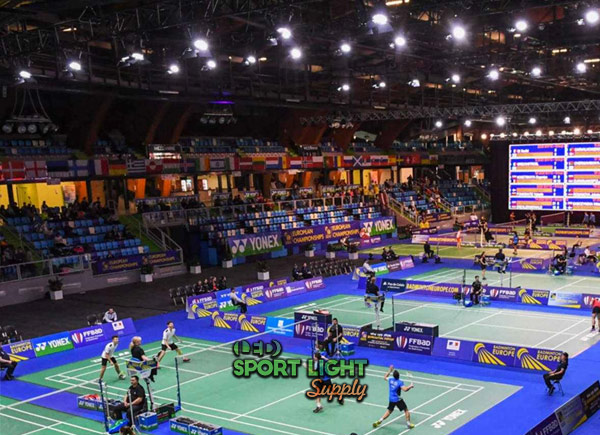 For local competitions, lighting should be between 500 and 700 lux (46-65 fc). This level of brightness is necessary as most games occur in the evening. Proper lighting ensures that players, umpires, referees, and spectators can clearly see the court and surrounding areas. With 500-700 lux, the lighting resembles that of a well-lit supermarket, enhancing the visibility and overall experience for everyone involved.
For local competitions, lighting should be between 500 and 700 lux (46-65 fc). This level of brightness is necessary as most games occur in the evening. Proper lighting ensures that players, umpires, referees, and spectators can clearly see the court and surrounding areas. With 500-700 lux, the lighting resembles that of a well-lit supermarket, enhancing the visibility and overall experience for everyone involved.
National or International Tournaments
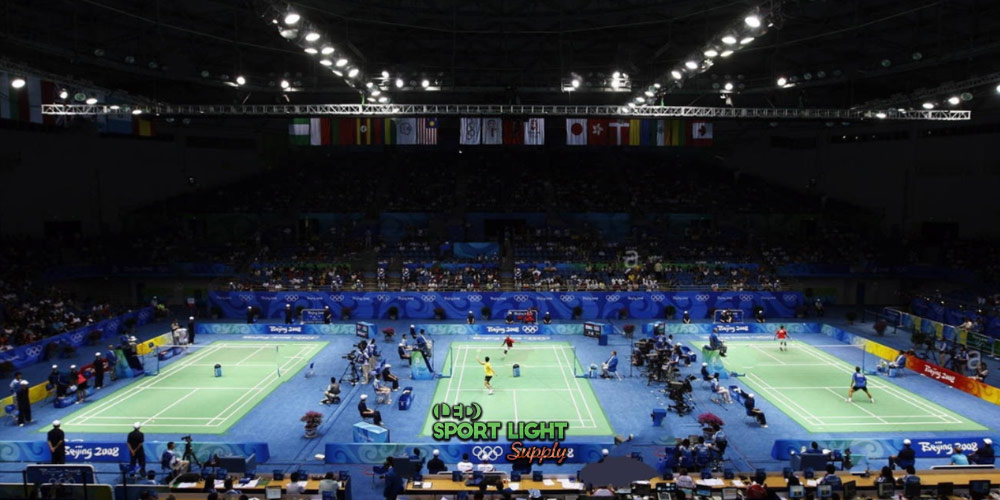
High-profile tournaments like the BWF World Championships and the Olympics require lighting levels of 1000 to 2000 lux (93-185 fc). LED fixtures are capable of achieving these high lux levels quickly, providing clear and balanced illumination. This type of lighting ensures excellent visibility for both players and spectators, making it easier to follow the action and enhancing the overall viewing experience. Such high-intensity lighting also minimizes shadows and improves the visual quality of televised matches, which is crucial for attracting sponsors and maintaining high standards of presentation.
Factors Affecting the Lux Level Required for Badminton Court Lighting
Level of Competitions
The required lux level for badminton court lighting varies significantly depending on the level of competition. At higher levels, such as international tournaments, lighting design becomes more critical, not just for player safety but also for enhancing the spectator experience and attracting high-profile sponsors. Brighter lights are essential for these high-stakes events to ensure optimal visibility and to make the court appealing for viewers and potential sponsors. Top-tier LED lights are often used to meet these demands, offering a good return on investment due to their superior performance and energy efficiency.
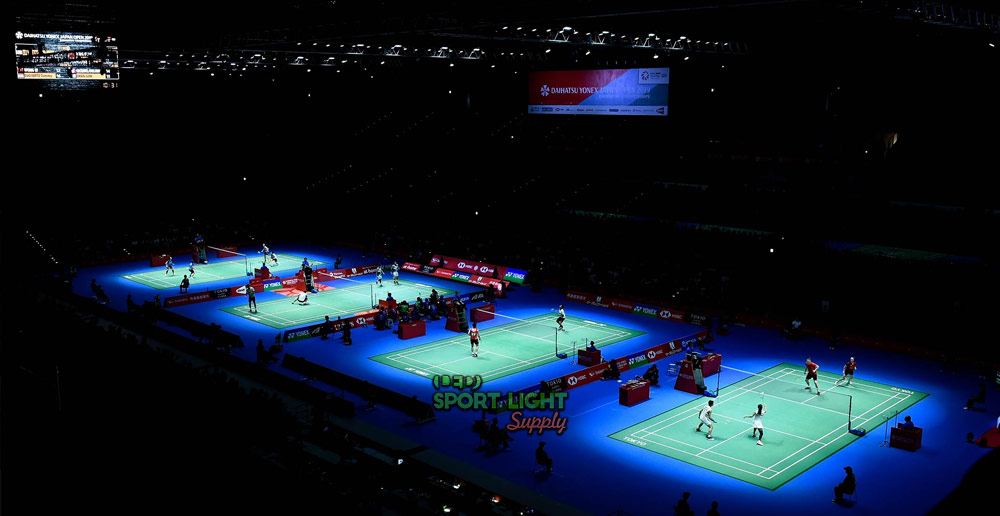
TV Broadcasting
For community competitions that are televised, the lighting needs to be adjusted to prevent issues such as flickering and strobing that can occur with inadequate lighting. High-quality lighting design helps to eliminate these problems, providing a clear and stable broadcast. Additionally, efficient lighting with a high Color Rendering Index (CRI) improves the visual quality of the broadcast, making the viewing experience more enjoyable and accurate for audiences watching at home.
Indoor or Outdoor Badminton Court
The location of the badminton court—whether indoor or outdoor—affects the lighting requirements and the performance of light fixtures. In indoor courts, reflective surfaces such as walls and ceilings can influence how lux levels are perceived. Outdoor courts may be influenced by ambient light from nearby buildings or street lights, which can either enhance or detract from the effectiveness of the court lighting. Adjustments may be needed to account for these external light sources to ensure consistent and effective illumination.
End-User Requirements
Specific requirements from the badminton court or hall owner can also impact the lighting setup. Some owners may request exceptionally bright lighting for their facility or may prefer not to upgrade or retrofit existing systems. Since lighting regulations and technologies are continually evolving, it’s important to remain flexible and responsive to changes. Addressing these end-user constraints carefully and possibly consulting with lighting specialists can help in finding the most suitable and effective lighting solution for the specific needs of the badminton court.
Badminton Court Lighting Lux Level FAQ
What kind of lights are used in badminton courts?
Badminton courts utilize several types of lighting:
| Lighting Type | Description | Usage |
|---|---|---|
| Flood Lights | Produce a wide beam angle, covering broad areas and diffusing light evenly. Suitable for both indoor and outdoor use. | Practical for general coverage and effective lighting. |
| High Bay Lights | Typically 200W LED fixtures, used indoors, especially in badminton courts. Provide strong illumination and are strategically mounted. | Ideal for tournaments and training in indoor sports. |
| High Mast Lights | Used outdoors in multi-sport facilities including badminton, soccer, or basketball. Offer extensive coverage and precise lux levels. | Versatile for various sports activities with broad coverage. |
What is lux?
Lux (lx) is the unit of measurement for illuminance in the International System. One lux equals one lumen per square meter and measures the intensity of light over a given area. While lumen (lm) measures the total amount of light emitted by a source, lux measures how that light is distributed across a surface.
How to measure the lux level?
The most accurate way to measure lux levels is with a dedicated lux meter. Alternatively, smartphone apps designed for this purpose can provide readings by using the phone’s camera to assess light intensity. While app measurements may vary in accuracy, they can give a general idea of the lux level.
Why is the adequate lux level essential for badminton courts?
Proper lighting is crucial for enhancing players’ vision, creating a suitable atmosphere, and ensuring safety. Adequate lux levels help prevent issues such as glare and light pollution, which can affect both players and nearby residents. Proper illumination also reduces the risk of accidents by ensuring that obstacles and court boundaries are clearly visible.
Conclusion
Badminton court lighting must meet specific lux level requirements tailored to different sports activities. These requirements determine the quantity and types of luminaires needed. However, LED fixtures remain the top choice due to their energy efficiency and cost-saving benefits. They also simplify light control, ensuring optimal performance.
